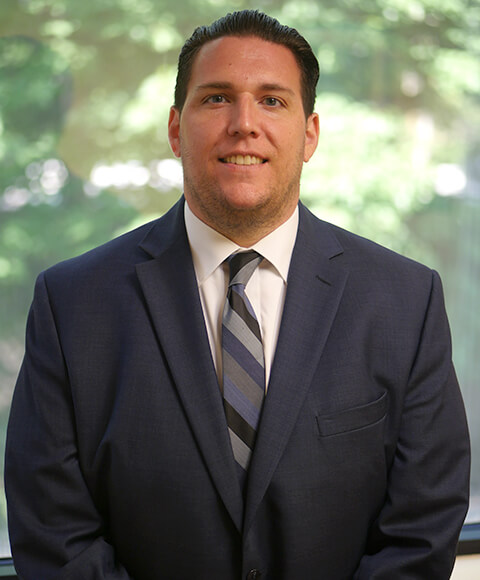ALBANY, N.Y. — When former Gov. Andrew M. Cuomo was charged in October with allegedly groping a female aide’s breast inside the Executive Mansion, the move was seen as something of a high-stakes risk.
The criminal complaint was centered on a single charge of forcible touching, a misdemeanor typically seen in cases involving unwanted sexual advances in public places, and often difficult to prosecute.
Of the roughly 1,400 cases brought in a typical year across the state where forcible touching is the top charge, nearly four in 10 are dismissed or dropped, according to Division of Criminal Justice Services records.
And even when the cases advance to court, few result in meaningful jail time.
In Albany County, where Mr. Cuomo was charged, a court disposition was reached in 12 cases last year that listed forcible touching as the top charge. Three were dismissed on the condition of good behavior; five cases were pleaded down to noncriminal violations, often punishable with a fine. The remaining four resulted in misdemeanor convictions — one of which received a sentence of time served, the others no jail time.
The prosecution of Mr. Cuomo, 63, who has vigorously denied the allegations against him, will certainly present challenges.
The criminal complaint was filed by the Albany County sheriff’s office, without coordination with local prosecutors. It is still not clear if the Albany district attorney, David Soares, intends to prosecute the case; after Mr. Soares suggested that the complaint was “potentially defective,” a judge granted his request to delay Mr. Cuomo’s arraignment until January.
The complaint is based on the account of Brittany Commisso, a former executive assistant to Mr. Cuomo. She has told investigators that Mr. Cuomo reached under her blouse late last year and groped her breast while they were alone in the Executive Mansion.
Evidence filed by the sheriff, which includes cellphone records, official schedules, card swipes, emails and flight logs, attempts to place Mr. Cuomo and Ms. Commisso in the same room at the same time. But like most forcible touching cases, there is no known irrefutable physical evidence against the former governor, putting the weight of the prosecution on the accuser’s testimony.
Ms. Commisso has also said that she did not tell anyone about it until many months later.
“There were two people in that room, him and her,” said Derrick Hogan, an Albany defense lawyer. “You can put all the tangential and circumstantial evidence behind it, but ultimately they have to prove two things: Did he touch her, and did he do it to satisfy his sexual desire?”
The charge of forcible touching is itself a new one, created in response to the fracas that broke out following the 2000 Puerto Rican Day Parade. One scorching Saturday afternoon after the parade, dozens of women were attacked by a throng of men in Central Park, who groped and robbed them and drenched them with water. The resulting outcry pushed lawmakers to strengthen penalties for sex crimes.
At the time, groping incidents were handled using a sex abuse statute that qualified perpetrators to a maximum jail term of 90 days. Under the new forcible touching provision, defendants had the right to a jury trial and could face punishment of up to a year in jail.
Even so, as a misdemeanor, forcible touching is on the milder end of the sex crime charges list and requires prosecutors to clear a relatively high bar. To win a conviction under the statute, Mr. Soares would need to prove that Mr. Cuomo touched Ms. Commisso without her consent for the purposes of his own sexual satisfaction, or to degrade her.
Legal experts said that to make such a case, a prosecutor would seek to show that the complaining witness is credible, consistent and has no ulterior motive. Witness testimony is considered evidence in a court of law — but juries sometimes struggle to apply this standard in sex crimes cases, lawyers said, applying a level of skepticism beyond that typically seen in criminal matters.
One way to overcome this skepticism, prosecutors said, is to put a mother, sister or colleague who an assault victim might have confided in immediately after the incident on the stand, to illustrate to the jury that they have repeatedly told the same story.
Ms. Commisso made no such immediate disclosure; Mr. Soares is likely to seek to explain why, said Jane Manning, a former sex crimes prosecutor and current director of the Women’s Equal Justice Project.
“We know a delayed report is often the norm, not the exception,” Ms. Manning said. “For assessing credibility, the more useful question is not ‘How quickly did she report?’ but ‘What were the circumstances surrounding her decision to report, whenever it happened?’”
Ms. Commisso told lawyers who ran the state attorney general’s investigation that she did not consider reporting the incident at the time, in part because her supervisor was the governor’s “right-hand person.”
“I feel like I was being taken advantage of, and at that moment that’s when I thought to myself, ‘OK, I can’t tell anyone. Who am I going to tell?’” she said, according to a transcript of her testimony.
But when she heard Mr. Cuomo publicly denying the accusations of another former aide and accuser, Charlotte Bennett, Ms. Commisso said she felt compelled to disclose what she said happened to her.
“There were conversations about Charlotte, that could people believe her, did she have any ulterior motive,” Ms. Commisso explained to investigators. “I couldn’t be part of those conversations anymore, because what she was saying was the truth. Those things actually did happen to me as well.”
Another element of proving Ms. Commisso’s account would be showing that aspects of her story are consistent with established facts and evidence — using flight logs and phone records, as well as card swipe data from the governor’s mansion, the governor’s schedule and emails to establish that Mr. Cuomo and Ms. Commisso were in the room at the time of the alleged incident.
Here, too, prosecutors may face challenges.
Initially, Ms. Commisso told investigators for the attorney general that the incident occurred in November, possibly on Nov. 16, although she could not be sure of the date. Sheriff Craig Apple of Albany County, in coordination with investigators for the State Assembly, determined that evidence showed the likelier date was Dec. 7, and included this date on the criminal complaint.
“The date issue itself is a problem,” said Roger Canaff, a former sex crimes prosecutor in New York City. “It’s fodder for the defense. If she’s that certain, why would she be uncertain about the date?”
The timeline confusion has already proved a boon to Mr. Cuomo’s team, who have seized on it and other inconsistencies to try to undermine Ms. Commisso.
They suggested that it defied logic for Ms. Commisso not to recall the Dec. 7 date, when it came “the same week” that another former aide and accuser, Lindsey Boylan, accused Mr. Cuomo of sexual harassment.
“What is more incredible is that Ms. Commisso — who could not recall the day, week, or month that she was allegedly traumatically assaulted — wouldn’t have remembered that the incident took place the same week Ms. Boylan made sexual harassment allegations,” according to a statement Mr. Cuomo released last month.
But Ms. Boylan’s public accusation of sexual harassment was made Dec. 13, a week after the date that the sheriff’s complaint said the alleged incident occurred at the governor’s mansion. Ms. Boylan had criticized the Cuomo administration on Dec. 5 for its “beyond toxic” work environment, but that social media post made no mention of sexual harassment.
The Dec. 7 timeline was also supported in a report recently released by the Assembly Judiciary Committee that found “overwhelming evidence” that Mr. Cuomo sexually harassed Ms. Commisso — a finding that, despite using a different standard from the criminal case, bolsters Ms. Commisso’s account in the public eye, and deflects from Mr. Cuomo’s arguments that the attorney general’s report was politically motivated.
The defense may try to argue that Mr. Cuomo had touched Ms. Commisso consensually, or even by accident, legal experts suggested. But such arguments might open the door for the prosecution to bring in the testimony of some of the other 10 women who have accused Mr. Cuomo of sexual harassment — a legal tactic that is rarely permitted, but was used in the Weinstein and Cosby cases. Judges are hesitant to allow these witnesses to testify, lawyers said, on the ground that allowing testimony about uncharged allegations could unfairly prejudice the jury.
More likely, legal experts said, Mr. Cuomo will continue to say what he has all along: that he has never touched anyone inappropriately.
Ultimately, Mr. Canaff said, any case will come down to whose version of events a jury wants to believe: the powerful former governor who has lived most of his life in public, or Ms. Commisso, a young mother who seems to have little to gain from the accusations.
“One person’s word against another’s is not fatal. Criminal cases are tried on that basis all the time,” Mr. Canaff said. “It all turns on the credibility of that witness.”





